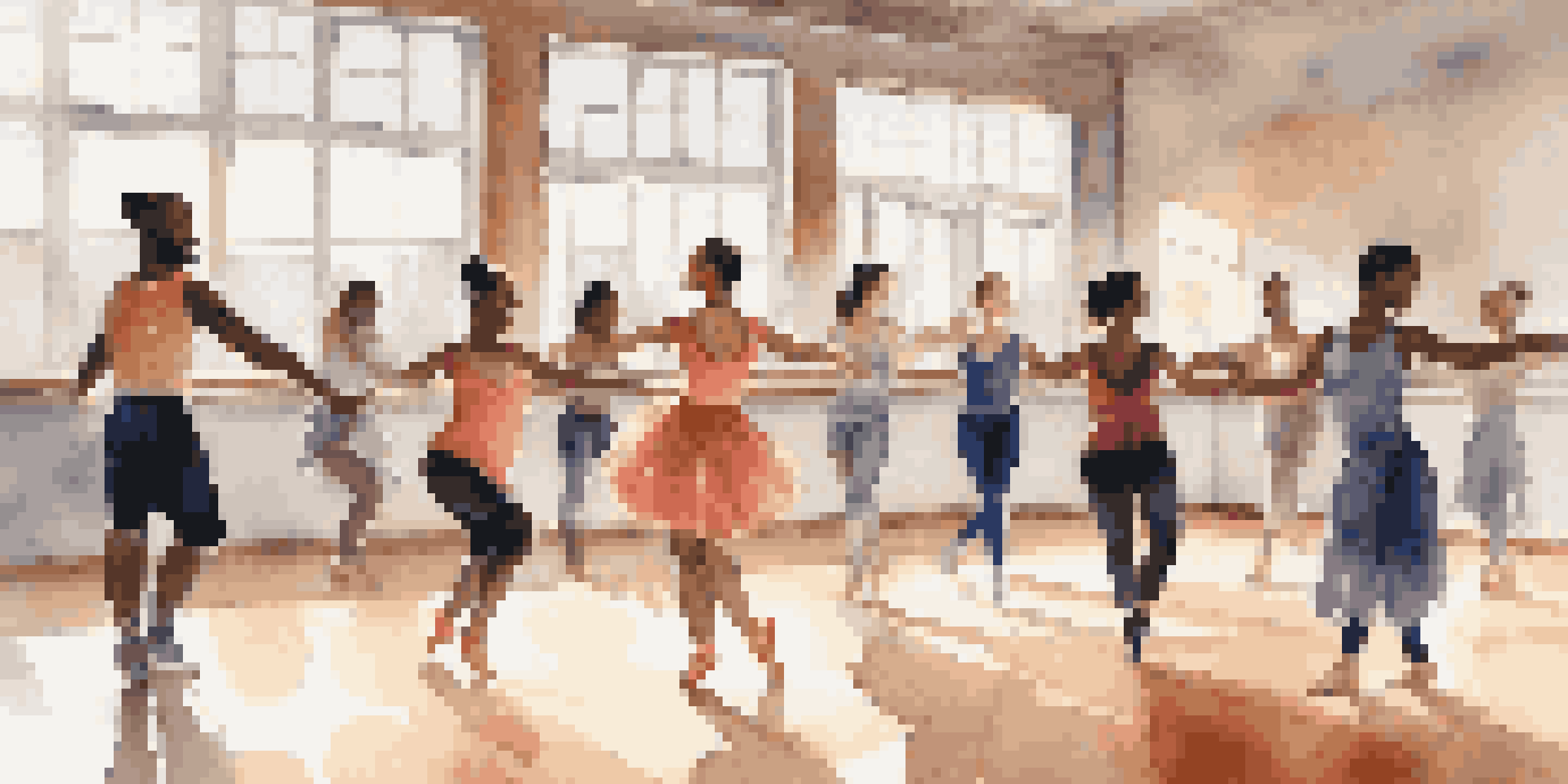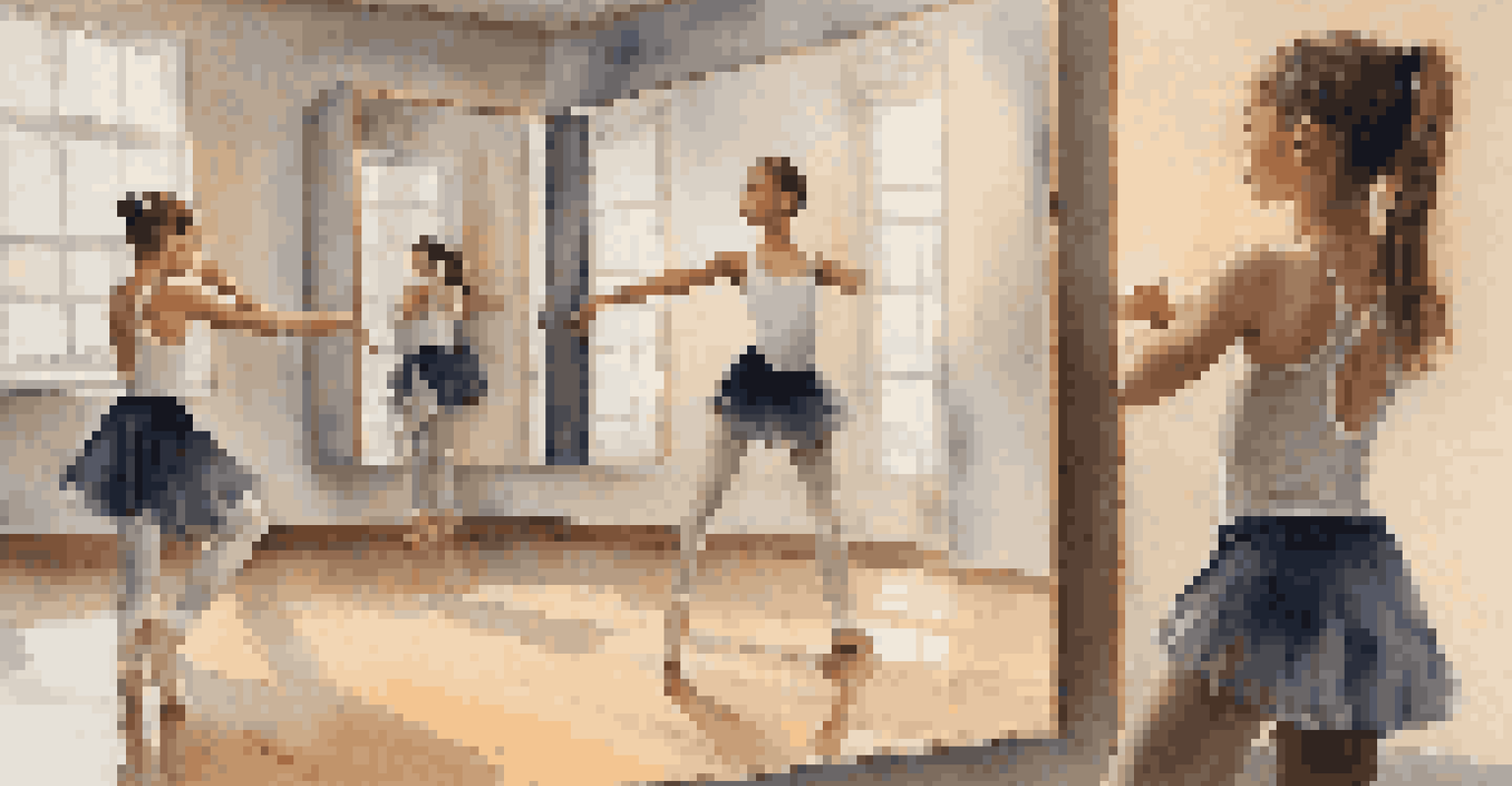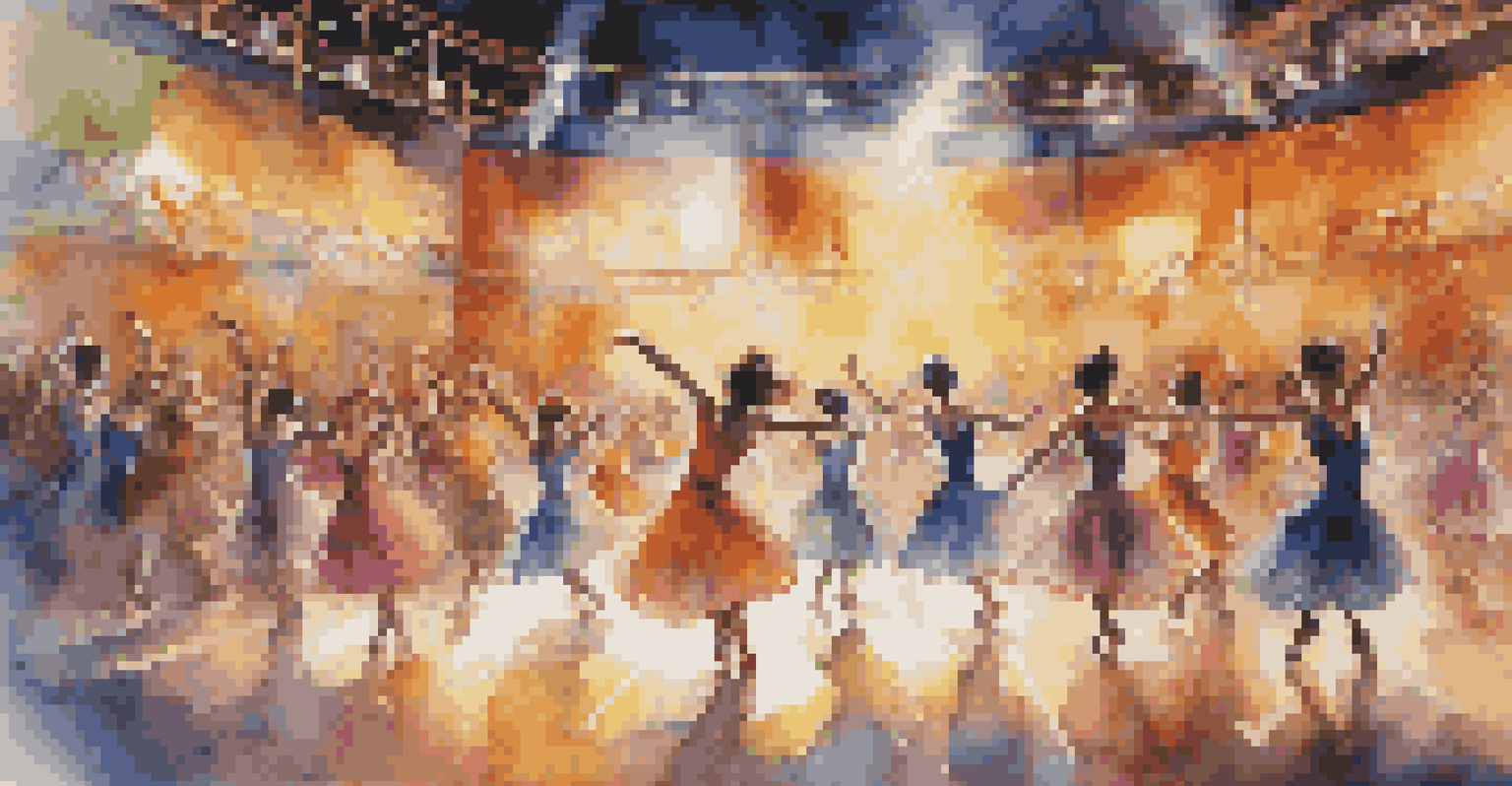The Transition from Recreational to Competitive Dance

Understanding the Foundations of Recreational Dance
Recreational dance is all about joy, self-expression, and creativity. It provides a nurturing environment where dancers can explore various styles without the pressure of competition. This foundation is essential; it allows dancers to develop their skills while fostering a love for movement.
Dance is the hidden language of the soul.
In recreational dance classes, the focus is often on fun and community, helping dancers build friendships and confidence. It's a space where mistakes are seen as learning opportunities rather than setbacks. This supportive atmosphere can be crucial for young dancers, encouraging them to enjoy the process.
As dancers progress, they may find themselves wanting more challenges and opportunities to showcase their skills. This desire often sparks the transition from recreational dance to a more structured, competitive environment, where the stakes are higher but so are the rewards.
Recognizing the Desire for Competition
The shift to competitive dance usually begins with a spark of ambition. Dancers might watch a competition and feel inspired, or they might receive encouragement from teachers or peers. This newfound desire can be exhilarating, igniting a passion for performance that pushes them to elevate their skills.

It's essential for dancers to recognize their motivations for wanting to compete. Are they seeking validation, or do they genuinely want to challenge themselves? Understanding these motivations can help dancers approach competition with the right mindset, making the transition more fulfilling.
Joy in Recreational Dance
Recreational dance nurtures joy and self-expression, allowing dancers to build skills in a supportive environment.
Moreover, this desire for competition often comes with a commitment to training and practice. Dancers must be prepared to dedicate more time and energy to perfecting their craft, which can be a significant adjustment from the more relaxed recreational setting.
Setting Goals for Competitive Dance
Once the desire to compete is clear, setting specific goals becomes crucial. Dancers should consider what they want to achieve, whether it's mastering a particular technique or placing in a competition. Having these goals provides a roadmap for their training and helps maintain focus.
The only way to do great work is to love what you do.
Additionally, it's beneficial to break down larger goals into smaller, manageable steps. For instance, if a dancer aims to improve their flexibility, they can set a goal to practice specific stretches a few times a week. This approach not only makes the goals feel more achievable but also adds a sense of accomplishment along the way.
Regularly revisiting and adjusting these goals can also be helpful. As dancers progress, their aspirations may shift, and it’s important to adapt to those changes to ensure continued motivation and engagement in their dance journey.
Training Routines: A New Level of Commitment
Transitioning to competitive dance means embracing a more rigorous training routine. Dancers may find themselves attending more classes, rehearsals, and workshops to refine their technique and performance skills. This increased commitment is essential for success in the competitive arena.
Balancing practice with recovery is another vital aspect of this transition. Dancers need to listen to their bodies and ensure they’re not overtraining, which can lead to burnout or injuries. Incorporating rest days and cross-training can help maintain physical health and keep the passion for dance alive.
Embrace Competition Mindset
Transitioning to competitive dance requires understanding personal motivations and fostering a growth-oriented mindset.
Moreover, supportive mentors and teachers can play a significant role during this phase. They can guide dancers through their training, providing feedback and encouragement that helps them navigate the challenges of a more demanding schedule.
Embracing the Competitive Environment
Entering the competitive dance world can be both thrilling and intimidating. Dancers will face new challenges, such as performing in front of judges and competing against others at a similar skill level. Embracing this environment requires a shift in mindset, focusing on personal growth rather than solely on winning.
Building a positive relationship with competition is crucial. Dancers can benefit from viewing competitions as opportunities to showcase their hard work and learn from others, rather than just a test of their abilities. This perspective can help alleviate some of the pressure that often accompanies competitive dance.
Additionally, connecting with fellow competitors can create a sense of camaraderie. Sharing experiences, tips, and encouragement can transform the competitive environment into a supportive community rather than a battleground.
Dealing with Performance Anxiety
Performance anxiety is a common challenge for many competitive dancers. The pressure to perform well can lead to feelings of nervousness or self-doubt, which can impact a dancer's ability to showcase their skills. Recognizing these feelings is the first step in managing them effectively.
Dancers can adopt various techniques to cope with performance anxiety, such as visualization, deep breathing, or positive affirmations. These strategies help create a calm mindset and boost confidence before stepping onto the stage. Practicing these techniques regularly can make them more effective during high-pressure situations.
Celebrate Achievements Together
Recognizing both big and small milestones in dance fosters motivation and supports a positive community atmosphere.
Moreover, sharing experiences with peers can also alleviate anxiety. Knowing that others face similar challenges can foster a supportive environment where dancers feel less isolated in their struggles, ultimately enhancing their overall experience in competitive dance.
Celebrating Achievements and Growth
As dancers transition to competitive dance, it's important to celebrate both big and small achievements. Whether it's nailing a challenging routine or simply feeling more confident on stage, acknowledging these milestones can help maintain motivation and passion for dance. Celebrating progress reinforces the idea that growth is a continuous journey.
Moreover, reflecting on the growth experienced during this transition is equally important. Dancers can look back at how far they've come, both technically and personally. This reflection can instill a sense of pride and encourage them to continue pushing forward.

Lastly, fostering a culture of celebration within the dance community can enhance the overall experience. Encouraging dancers to support one another and recognize each other's achievements creates a positive atmosphere that benefits everyone involved in the competitive dance scene.